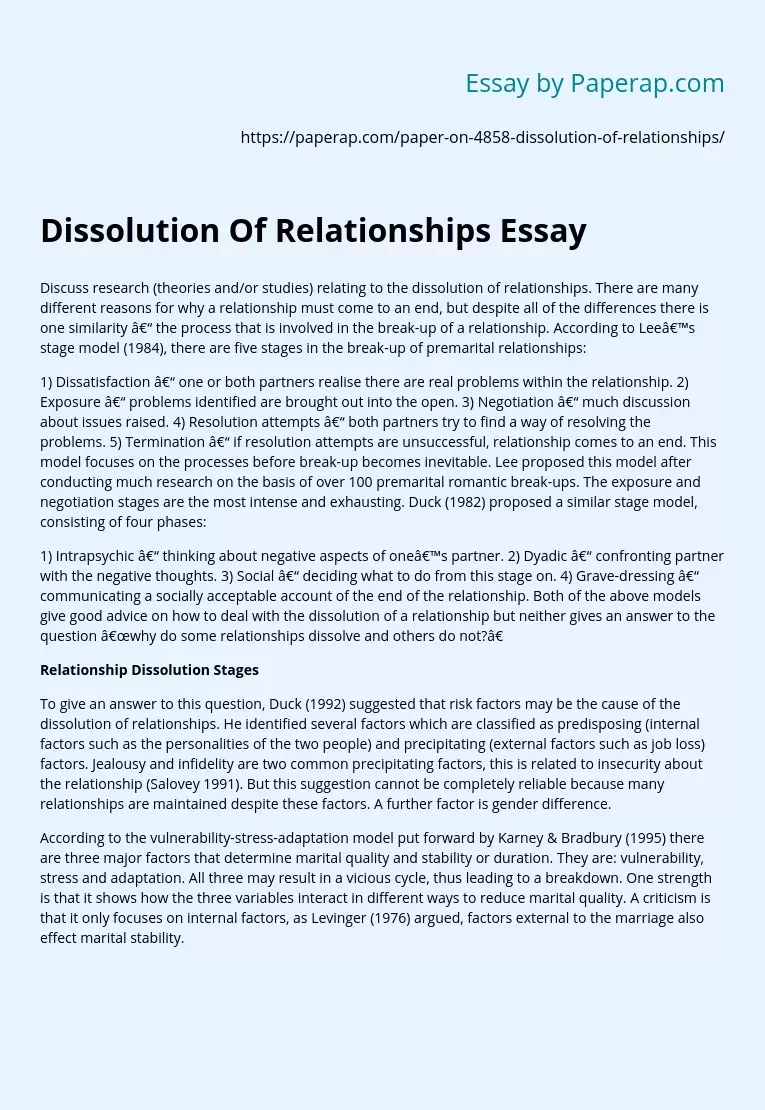Dissolution Of Relationships Essay
Discuss research (theories and/or studies) relating to the dissolution of relationships.
There are many different reasons for why a relationship must come to an end, but despite all of the differences there is one similarity – the process that is involved in the break-up of a relationship. According to Lee’s stage model (1984), there are five stages in the break-up of premarital relationships:
1) Dissatisfaction – one or both partners realise there are real problems within the relationship. 2) Exposure – problems identified are brought out into the open.
3) Negotiation – much discussion about issues raised. 4) Resolution attempts – both partners try to find a way of resolving the problems. 5) Termination – if resolution attempts are unsuccessful, relationship comes to an end. This model focuses on the processes before break-up becomes inevitable. Lee proposed this model after conducting much research on the basis of over 100 premarital romantic break-ups. The exposure and negotiation stages are the most intense and exhausting. Duck (1982) proposed a similar stage model, consisting of four phases:
1) Intrapsychic – thinking about negative aspects of one’s partner.
2) Dyadic – confronting partner with the negative thoughts. 3) Social – deciding what to do from this stage on. 4) Grave-dressing – communicating a socially acceptable account of the end of the relationship. Both of the above models give good advice on how to deal with the dissolution of a relationship but neither gives an answer to the question “why do some relationships dissolve and others do not?”
Relationship Dissolution Stages
To give an answer to this question, Duck (1992) suggested that risk factors may be the cause of the dissolution of relationships. He identified several factors which are classified as predisposing (internal factors such as the personalities of the two people) and precipitating (external factors such as job loss) factors. Jealousy and infidelity are two common precipitating factors, this is related to insecurity about the relationship (Salovey 1991). But this suggestion cannot be completely reliable because many relationships are maintained despite these factors. A further factor is gender difference.
According to the vulnerability-stress-adaptation model put forward by Karney & Bradbury (1995) there are three major factors that determine marital quality and stability or duration. They are: vulnerability, stress and adaptation. All three may result in a vicious cycle, thus leading to a breakdown. One strength is that it shows how the three variables interact in different ways to reduce marital quality. A criticism is that it only focuses on internal factors, as Levinger (1976) argued, factors external to the marriage also effect marital stability.
Dissolution Of Relationships Essay. (2019, Dec 05). Retrieved from https://paperap.com/paper-on-4858-dissolution-of-relationships/

